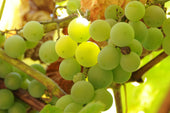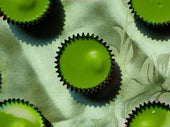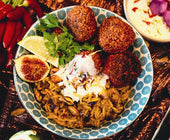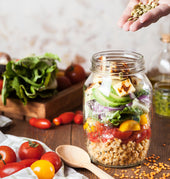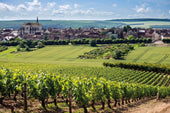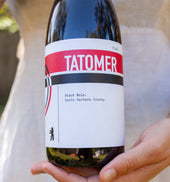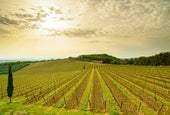
Wine Travel: Champagne
Just under two hours away from Paris awaits one of the most magnificent region for wine production. Specifically the region of Champagne, the king of all sparkling wine. Some people say you only drink Champagne for special occassions, however here at Plume Ridge Bottle Shop we tend to differ. Champagne should be enjoyed at any time and paired with meals just like you would with regular still wines. To understand Champagne, one must also understand how it is made and why it is so different from all the other sparkling wines on the market. View our article on the difference between Champagne and Sparkling wine.Did you know that the name Champagne is protected under the Joint Declaration to Protect Wine Place and Origin? In most countries (except grandfathered clauses in the USA) it is illegal to label any product Champagne unless it both comes from the Champagne region and produced under the rules of the appellation. The Comite Interprofessionel du vin de Champagne (CIVC) has developed a comprehensive set of rules and regulations for all wines produced in the region. Regulations include: Permitted grape varieties (Chardonnay, Pinot Noir, Pinot Meunier), vineyard yield, degree of pressing and time spent on its lees before bottling. Only wines that meets these requirements may be labeled Champagne. To make Champagne via the Champagne method or Methode Champenoise, a secondary fermentation is required in the bottle. Then the bottle must be aged for a minimum of 1.5 years to fully develop all the flavors. Some Champagne is made with several vintages blended together and on great vintages, a millesime (vintage) is declared as a single vintage. During the aging process the bottles are riddled in an upside down manner so the lees can settle in the neck of the bottle. The neck of the bottle is quickly chilled to remove the frozen cap of collected yeast. At that point, additional wine and perhaps sugar (dosage) is added to adjust the wine for its sweetness level.There are more than one hundred Champagne houses and over 19,000 small growers in Champagne. Big Champagne companies typically purchase grapes or still wines from the small growers and produce their own Champagne under a well recognized named. These companies (including the major large brands) are labeled as NM (Negociant Manipulant). As a result, most of the more recognized brand on the market are from wines blended from hundred if not thousands of sites.Look closely at our Champagne label and you will find RM (Recoltant Manipulant) aka Grower Champagne. These Champagnes will be more terroir focused and sourced from single or closely located vineyards around a village. These Champagnes represent the true artisanal winemaking with an emphasis on showcasing what each different vintage and terrior can offer, rather than a singular consistent "house style". Grower Champagne will typically be aged longer on the lees (provides more complexity) and higher quality of wine. There is a growing demand of this style of Champagne and we carry two of them currently.Tips to travel to ChampagneYou can take the fast train from Paris East to the city of Reims (1hr) or rent a car from the Paris airport if you are familiar with French highways. Once in Reims, the city has many tasting rooms and well known Champagne houses to visit. We recommend visiting Veuve Clicquot and discovering their magnificent caves. The tour is in English and will take about 1-2 hours. You will see where the Champagnes are stored, great art collection and even older vintage bottles. The city is great for walking around, grabbing a nice lunch and shopping at the local wine shops.
To make Champagne via the Champagne method or Methode Champenoise, a secondary fermentation is required in the bottle. Then the bottle must be aged for a minimum of 1.5 years to fully develop all the flavors. Some Champagne is made with several vintages blended together and on great vintages, a millesime (vintage) is declared as a single vintage. During the aging process the bottles are riddled in an upside down manner so the lees can settle in the neck of the bottle. The neck of the bottle is quickly chilled to remove the frozen cap of collected yeast. At that point, additional wine and perhaps sugar (dosage) is added to adjust the wine for its sweetness level.There are more than one hundred Champagne houses and over 19,000 small growers in Champagne. Big Champagne companies typically purchase grapes or still wines from the small growers and produce their own Champagne under a well recognized named. These companies (including the major large brands) are labeled as NM (Negociant Manipulant). As a result, most of the more recognized brand on the market are from wines blended from hundred if not thousands of sites.Look closely at our Champagne label and you will find RM (Recoltant Manipulant) aka Grower Champagne. These Champagnes will be more terroir focused and sourced from single or closely located vineyards around a village. These Champagnes represent the true artisanal winemaking with an emphasis on showcasing what each different vintage and terrior can offer, rather than a singular consistent "house style". Grower Champagne will typically be aged longer on the lees (provides more complexity) and higher quality of wine. There is a growing demand of this style of Champagne and we carry two of them currently.Tips to travel to ChampagneYou can take the fast train from Paris East to the city of Reims (1hr) or rent a car from the Paris airport if you are familiar with French highways. Once in Reims, the city has many tasting rooms and well known Champagne houses to visit. We recommend visiting Veuve Clicquot and discovering their magnificent caves. The tour is in English and will take about 1-2 hours. You will see where the Champagnes are stored, great art collection and even older vintage bottles. The city is great for walking around, grabbing a nice lunch and shopping at the local wine shops.
Montagne de Reims Drive south of Reims to see the gentle rolling hills and slops of the Montagne de Reims. This famous area is the location of many superior Grand Cru and Premier Cru vineyards and villages. Make a stop at Dumenil and discover the small town of Chigny-les-Roses. This is where the Dumenil family has been making Champagne since 1874. Their vineyards are all 100% Premier Cru with a single vineyard offering called "Les Percherines". This is the crown jewel of Dumenil made with their oldest vines planted on deep chalky soils. With mostly Chardonnay and 5 years aging on the lees, this Champagne explodes with complexity and flavors. Dumenil just opened their new tasting room in the nearby town of Sacy, however they will be more than happy to receive and tour the vineyards and properties with visitors. Did we mention that Dumenil is a Grower Champagne with excellent quality and expertise? The estate is still operated and owned by the the great granddaughter (Frederique) of the founder of the house. Her husband Hugues is also from a long line of vignerons in the nearby village of Sacy (another Premier Cru village). Together with two kids, winemaking team and nature's best terrior for Champagne, Dumenil has all the components of a top Champagne with out the price tag. We were very pleased to discover this Grower Champagne.
Drive south of Reims to see the gentle rolling hills and slops of the Montagne de Reims. This famous area is the location of many superior Grand Cru and Premier Cru vineyards and villages. Make a stop at Dumenil and discover the small town of Chigny-les-Roses. This is where the Dumenil family has been making Champagne since 1874. Their vineyards are all 100% Premier Cru with a single vineyard offering called "Les Percherines". This is the crown jewel of Dumenil made with their oldest vines planted on deep chalky soils. With mostly Chardonnay and 5 years aging on the lees, this Champagne explodes with complexity and flavors. Dumenil just opened their new tasting room in the nearby town of Sacy, however they will be more than happy to receive and tour the vineyards and properties with visitors. Did we mention that Dumenil is a Grower Champagne with excellent quality and expertise? The estate is still operated and owned by the the great granddaughter (Frederique) of the founder of the house. Her husband Hugues is also from a long line of vignerons in the nearby village of Sacy (another Premier Cru village). Together with two kids, winemaking team and nature's best terrior for Champagne, Dumenil has all the components of a top Champagne with out the price tag. We were very pleased to discover this Grower Champagne.
Epernay If walking around the Montagne de Reims does work up an appetite, perhaps a nice stroll down the Rodeo Drive of Champagne will. Epernay is the home of Moet Chandon. Beneath the streets lies many subterranean cellars and more than 200 million bottles of Champagne. Just 15 miles south of Reims, Epernay is a great destination for your visit from Reims. Pick a few Champagne houses to visit on Avenue de Champagne. The street is lined with mansions and villas all rebuilt after WWI. We suggest spending a night in Epernay in a quaint bed and breakfast and continue your Champagne tour the next day to discover additional small outlying villages. On Saturday mornings there is nice farmers market right near the center of town if you like to sample the local fare.For additional tourism information visit the official Champagne Tourism site for detailed wine tours.
If walking around the Montagne de Reims does work up an appetite, perhaps a nice stroll down the Rodeo Drive of Champagne will. Epernay is the home of Moet Chandon. Beneath the streets lies many subterranean cellars and more than 200 million bottles of Champagne. Just 15 miles south of Reims, Epernay is a great destination for your visit from Reims. Pick a few Champagne houses to visit on Avenue de Champagne. The street is lined with mansions and villas all rebuilt after WWI. We suggest spending a night in Epernay in a quaint bed and breakfast and continue your Champagne tour the next day to discover additional small outlying villages. On Saturday mornings there is nice farmers market right near the center of town if you like to sample the local fare.For additional tourism information visit the official Champagne Tourism site for detailed wine tours.
 Contributed by Monica Yu , Assistant Wine Buyer for Plume Ridge Bottle Shop
Contributed by Monica Yu , Assistant Wine Buyer for Plume Ridge Bottle Shop








